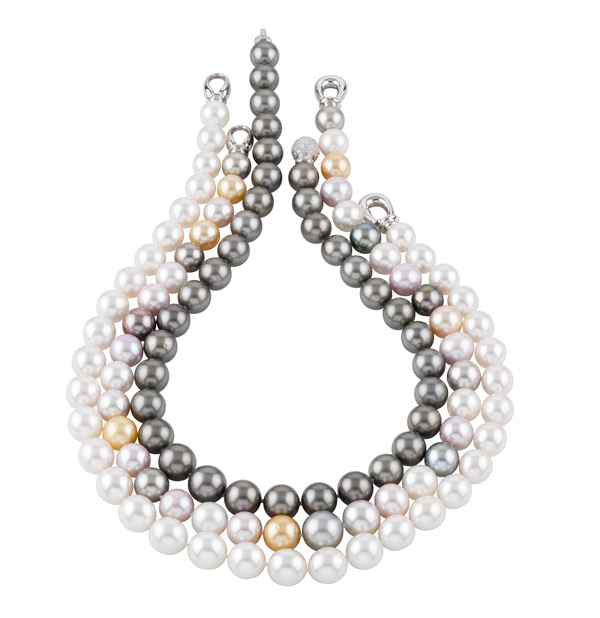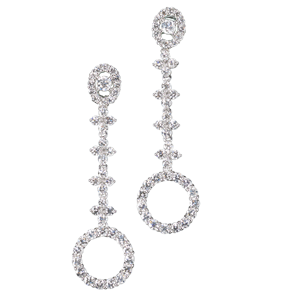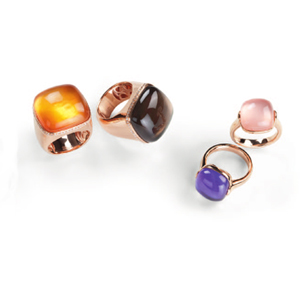JEWELRY CARE
CARE TIPS FOR PEARLS
In general, pearls should be stored in jewelry pouches or boxes, separated from other pieces of jewelry.
They should not be stored near a heater, and prolonged direct sunlight should also be avoided.
We recommend not wearing pearl jewelry at the hairdresser’s (due to hair dye and hairspray), in swimming pools (chlorine), in the sea (salt), or in the sauna (sweat).
Pearls are a natural product, and the negative influences mentioned above can cause pearls to irreversibly lose their luster and, in some cases, even change color.
Many chemical substances attack the surface of pearls and ruin them. Therefore, you should protect your pearl rings, pearl necklaces, and pearl earrings, etc. from cleaning agents, perfume, cosmetics, and other chemicals. Also protect your pearl jewelry from sweat.
Restringing pearl necklaces
Pearl necklaces today are usually strung on carbon-reinforced silk thread. These are extremely durable threads, but even the strongest thread can eventually break.
Additionally, the knots between the pearls change and discolor over time.
For this reason, we recommend having your pearl necklace checked by us once a year and, if necessary, restrung.
CARE TIPS FOR LIGHT DIRT ON YOUR JEWELRY
With a soft brush and lukewarm water, you can gently remove dust, soap, or cream residues from your jewelry using a mild wool detergent.
Please note: many gemstones are extremely sensitive to temperature, so it is best not to clean these pieces of jewelry yourself.
We recommend bringing your jewelry to us from time to time for professional cleaning. In our workshop, we use special ultrasonic devices and polishing machines to restore your jewelry to its original brilliance. On this occasion, we also check whether the gemstones are still secure in their settings, so that you don’t risk losing any stones.
Polishing Jewelry
Unfortunately, high-polish jewelry loses its shine over time with wear. From time to time, jewelry should be repolished, because even the most expensive jewelry begins to show wear after frequent use. Rings are particularly affected, as they are worn daily, accumulate tiny scratches with every movement, and quickly gather dirt in their settings.
By polishing with special equipment, we can restore the original shine.
White gold jewelry is almost always plated with a thin layer of rhodium, which creates an especially white, bright, and durable luster. Over the years, this rhodium layer wears away, and the underlying slightly yellowish white gold becomes visible. This process, called rhodium plating, should be renewed periodically so that your jewelry looks like new again.
GEMSTONES AND SEMI-PRECIOUS STONES
Gemstones include diamonds, sapphires, rubies, and emeralds.
Semi-precious stones include countless other varieties, from aquamarine to zircon.
Among these, the diamond is the hardest naturally occurring material.
Diamonds can scratch all other objects (including another diamond). Therefore, always store your jewelry pieces in a way that prevents them from scratching each other.
Always remove gemstone jewelry before working in the garden or around the house. Gemstones can be scratched, or may chip, crack, or even break from knocks or pressure. This reduces their value. Only flawless, unscratched stones retain their full value. This applies equally to semi-precious stones.
Special care should be taken with emeralds. They are particularly delicate and can crack or scratch even from relatively light impacts. For this reason, they should always be removed before sports or similar activities. Due to their high sensitivity (including temperature sensitivity), we recommend having emerald jewelry cleaned professionally.



